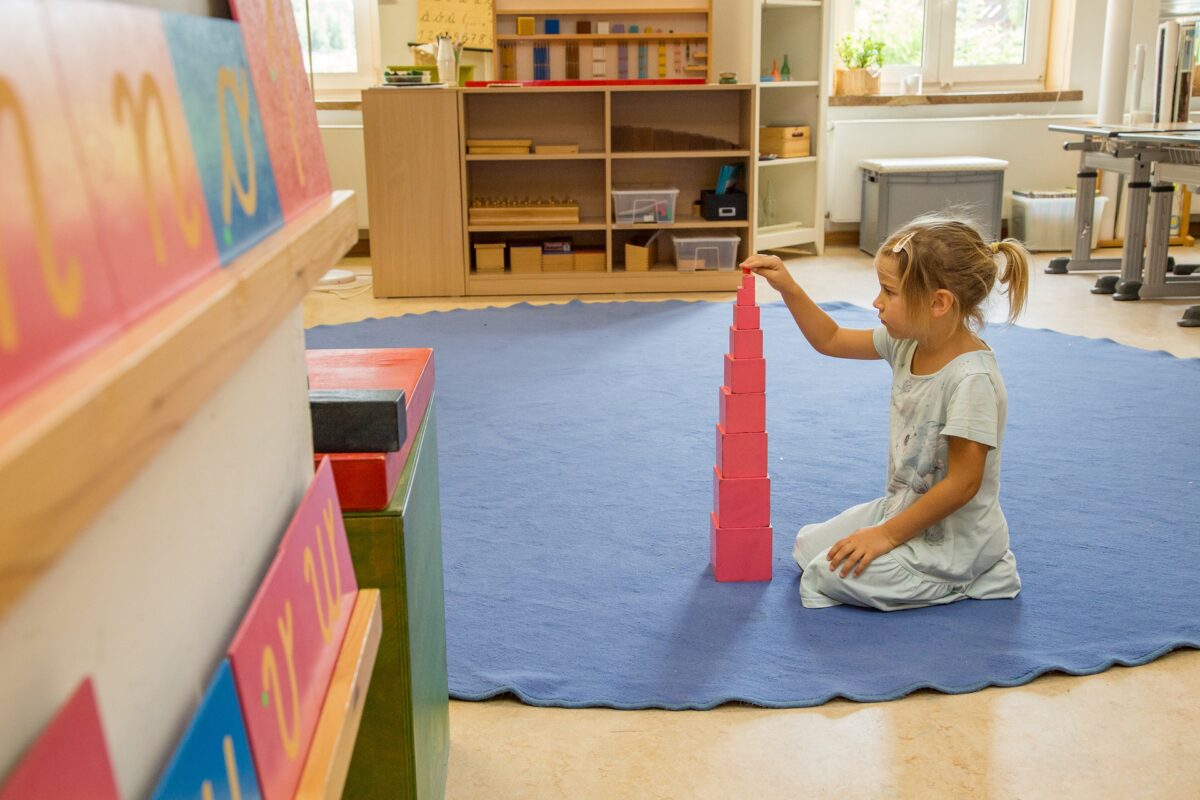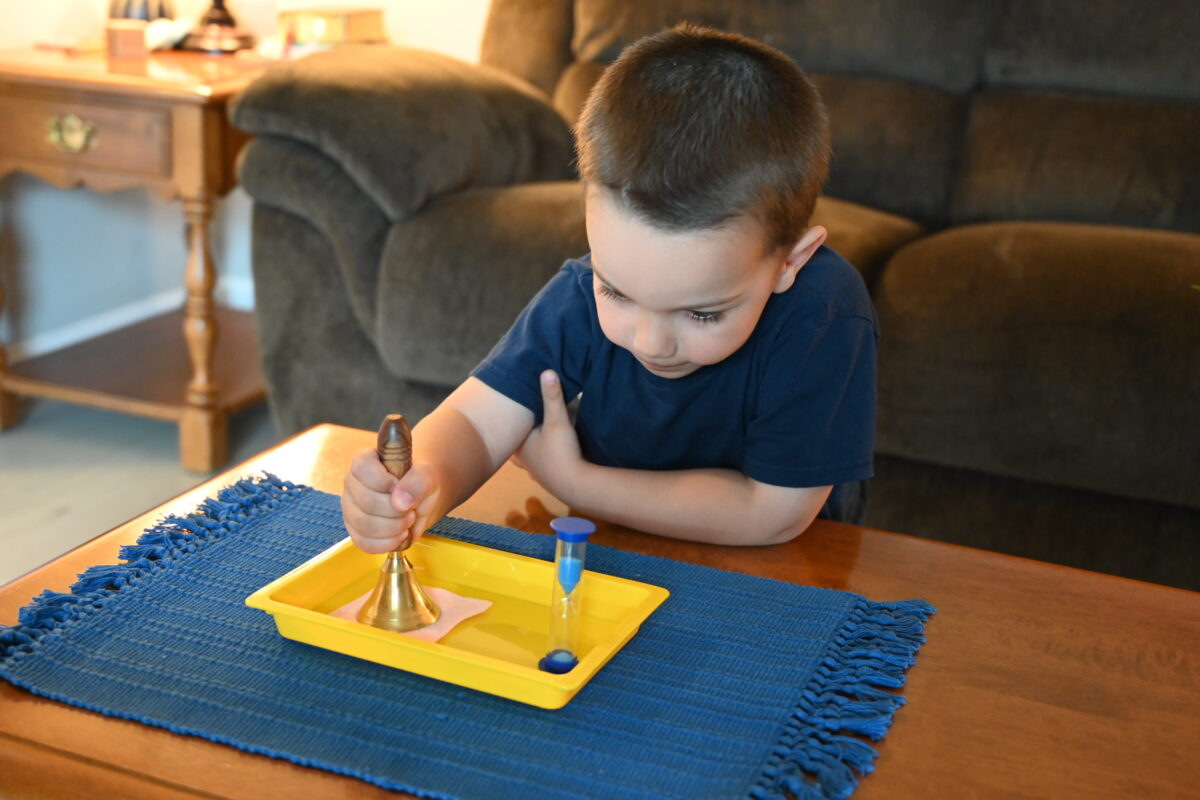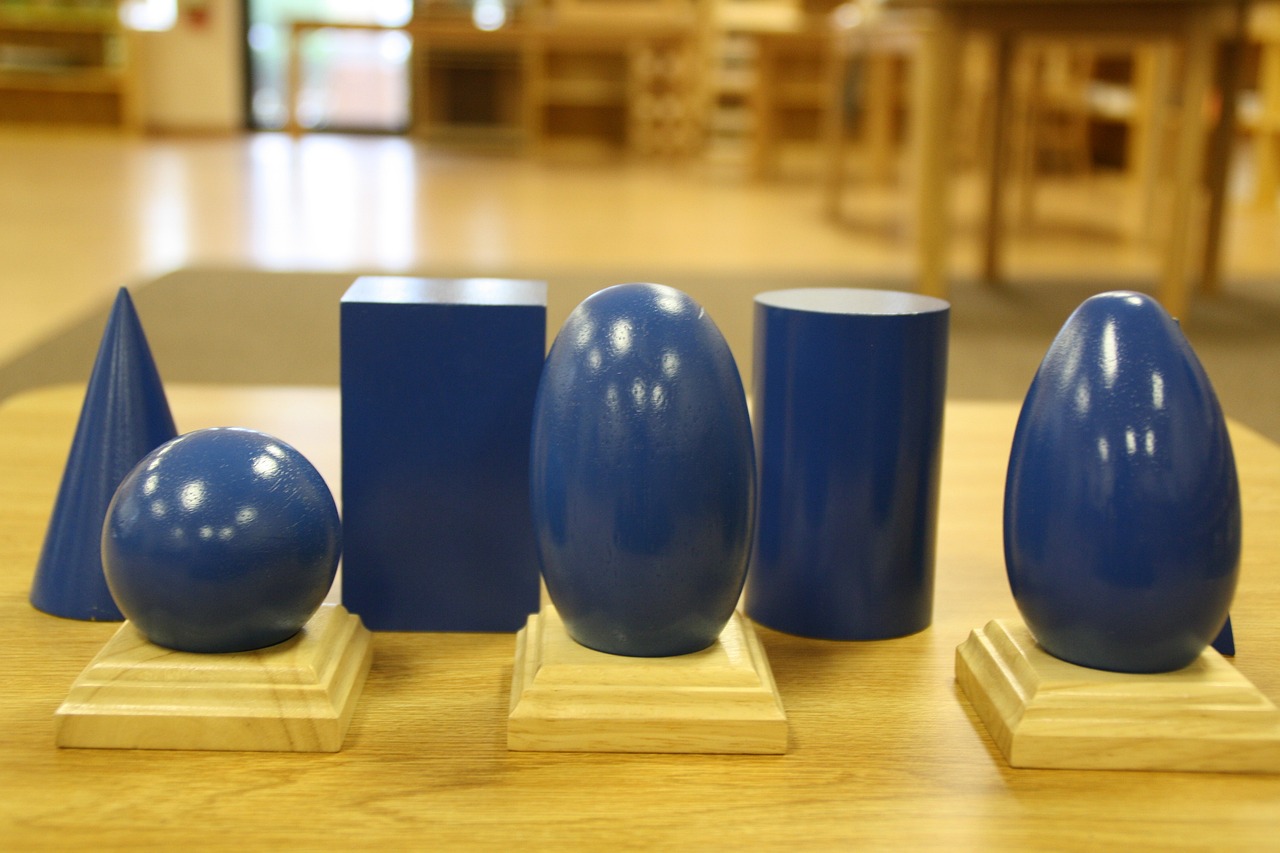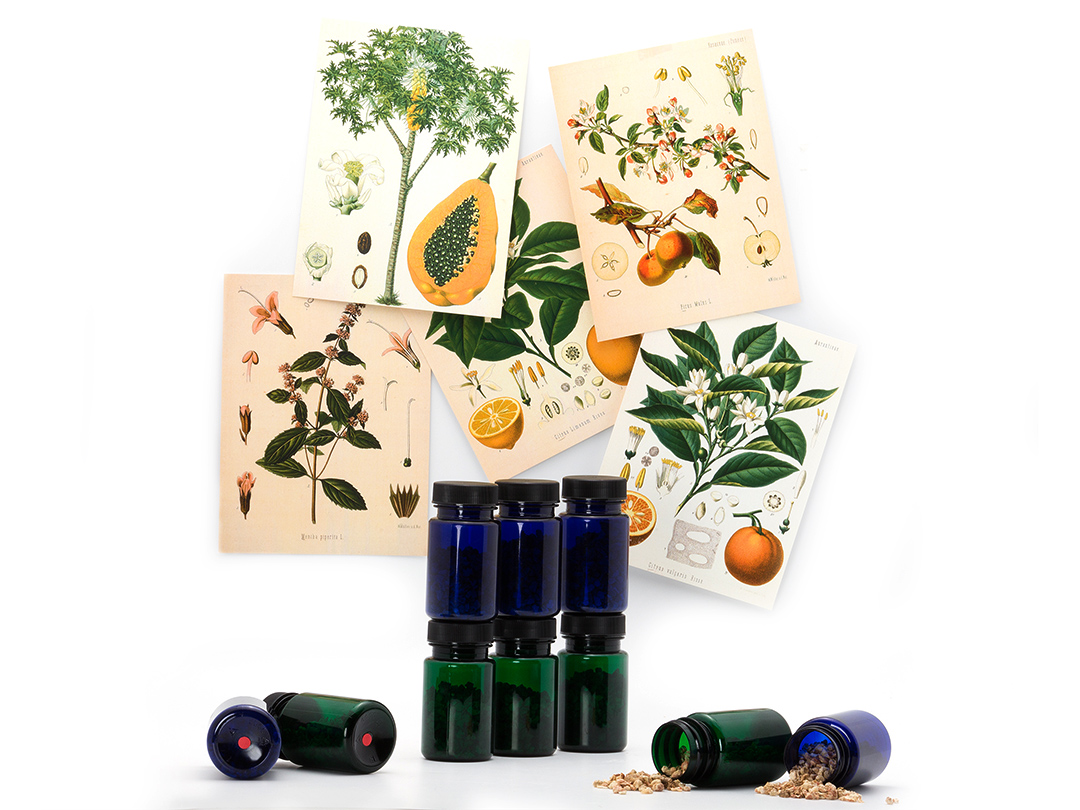The Montessori Sensorial Curriculum
Long before sensory bins became trendy and research proved the power of sensory play, Maria Montessori created the Montessori sensorial curriculum.
Dr. Montessori knew then from her observation what decades of research have since proven: children learn best when they engage their senses.
Every area of the Montessori classroom is full of tactile learning materials that invite children to explore with their hands, eyes, ears, mouth, and even nose. But the sensorial area of the Montessori classroom is dedicated to materials that primarily exist to develop a child’s five senses.
The great news for Montessori homeschool parents? Children don’t need to be in a Montessori classroom to enjoy the benefits of the Montessori sensorial curriculum! In this article, we’ll discuss a few key sensorial materials and how parents can apply this curriculum at home.

Montessori Sensorial Activities
As you may expect, the Montessori sensorial curriculum relies heavily on materials. These materials engage a child’s senses and meet them where they are in their development.
Below, you’ll find a few authentic Montessori materials for each of your child’s senses, though almost all of these materials engage multiple senses. We’ve also included links for you to take a deep dive into each material if you want to learn more.
Keep in mind that you don’t need to buy every material brand new to replicate the Montessori sensorial curriculum at home. You can make many of these materials yourself, or repurpose what you already have to teach the same principles.
Sight
- The pink tower. This iconic Montessori material, pictured above, is a tower of 10 pink, wooden blocks ranging in size from 1 cubed centimeter to 1000 cubed centimeters. Since each block is the same color and texture, the material allows children to focus on just one attribute: size. While this material helps children visually discriminate size, it also indirectly prepares them for later mathematics learning.
- The brown stair. The brown stair, also known as the broad stair, is another material made of 10 blocks, though they form a set of stairs rather than a tall tower. Similar to the pink tower, it teaches children differences in size and dimension.
- Montessori color tablets. This material consists of three boxes of color tablets and teaches children color and shade differentiation. You can make color tablets at home with paint samples! We also include a set in our Mad Scientist Toolbox.
Sound

- Montessori silence game. While not a shelf material, this activity is a powerful way to experiment with sound and silence! Read our article on bringing the Montessori silence game home for step-by-step instructions.
- Sound cylinders. Montessori sound cylinders come in two boxes. One box has six cylinders with a blue top that each makes a different sound when shaken. The other box has six cylinders with a red top which make identical sounds to the other box. This material teaches sound discrimination. Sound cylinders make a great DIY! Montessori By Mom includes also includes a fabulous set of sound cylinders in our Making Music Toolbox.
- Montessori bells. This set of 16 bells includes two bells for each note on the octave. Children can match notes and sort the bells from lowest pitch to highest. The bells teach pitch discrimination and help children identify musical notes.
Touch

- Geometric solids. Pictured above, the geometric solids introduce children to stereognostic materials, which teach children to recognize objects by touch alone. With this material, children can match the solids, learn to recognize them when covered, and identify they shape on the bottom of each.
- Mystery bag. Another stereognostic material, the mystery bag is an opaque bag filled with familiar objects for the child to identify by touch. A mystery bag with nature items is included in Montessori By Mom’s Shoots and Sprouts Toolbox.
- Knobbed cylinders. This material consists of four sets of 10 knobbed wooden cylinders of increasing sizes. The knobbed cylinders focus on teaching children dimension and also refines their pincer grasp to indirectly prepare them for writing.
Taste
- Tasting bottles. This exciting material helps children refine their sense of taste by sampling tastes from several different bottles. Children can practice their vocabulary relating to taste and learn to match bottles with the same taste. DIY Montessori tasting bottles are also simple to make at home!
Smell

- Smelling bottles. Similar to tasting bottles, smelling bottles refine a child’s sense of smell. Typically, the material consists of two sets of six bottles, with each set bearing a different color on the lid. Montessori By Mom’s Delicious Discoveries Toolbox includes a set of smelling bottles with 15 spices and 36 accompanying botany cards.
Incorporating Sensorial Experiences in Your Home Classroom
There are many ways you can include sensory experiences in your Montessori homeschool routine. While we’re big fans of the Montessori sensorial materials we’ve discussed here, these materials aren’t the only way to refine your child’s senses.
You can also focus on incorporating sensorial experiences in your child’s day-to-day life. Let your child smell the spices when you’re cooking together, handle sticks and leaves on nature walks, and jump in rain puddles.
Yes, sometimes the mess can be daunting — but when your kids are playing in the mud or mixing sticky bread dough with their fingers, try to see it as a sensory experience rather than an inconvenience.
We hope this article has helped you better understand the Montessori sensorial curriculum and how to foster sensory experiences in your Montessori homeschool routine. Do you have a favorite sensorial material? Let us know in the comments!




0 Comments